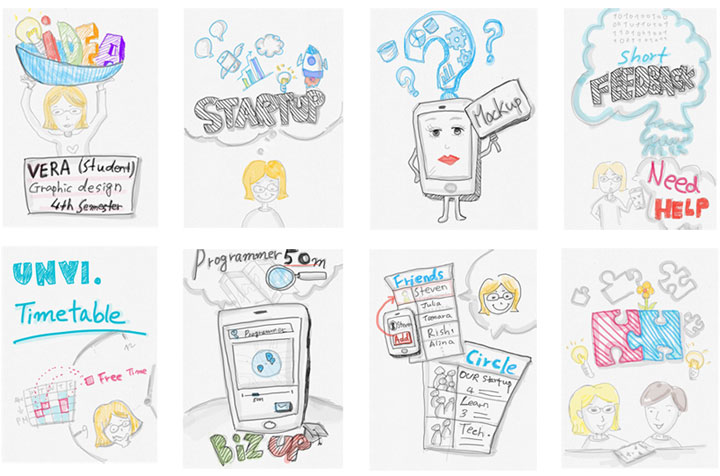
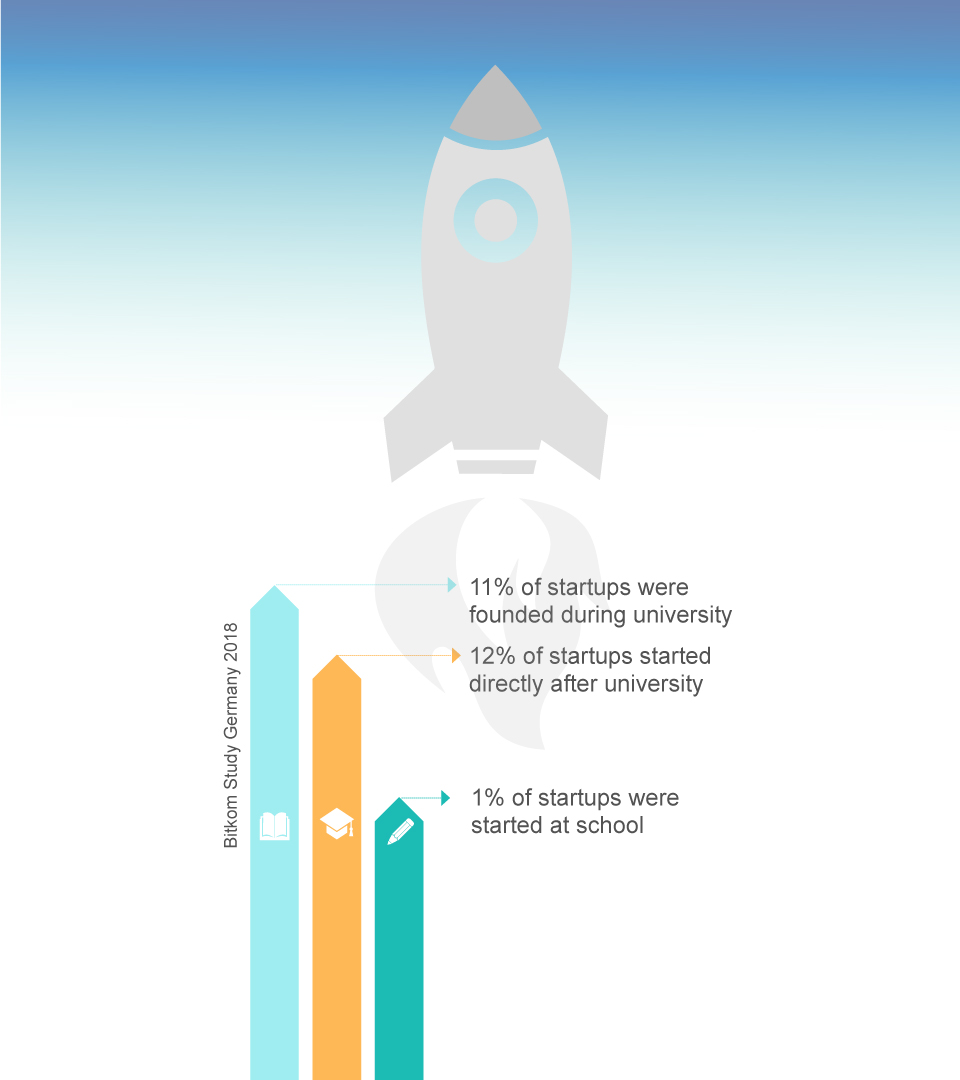
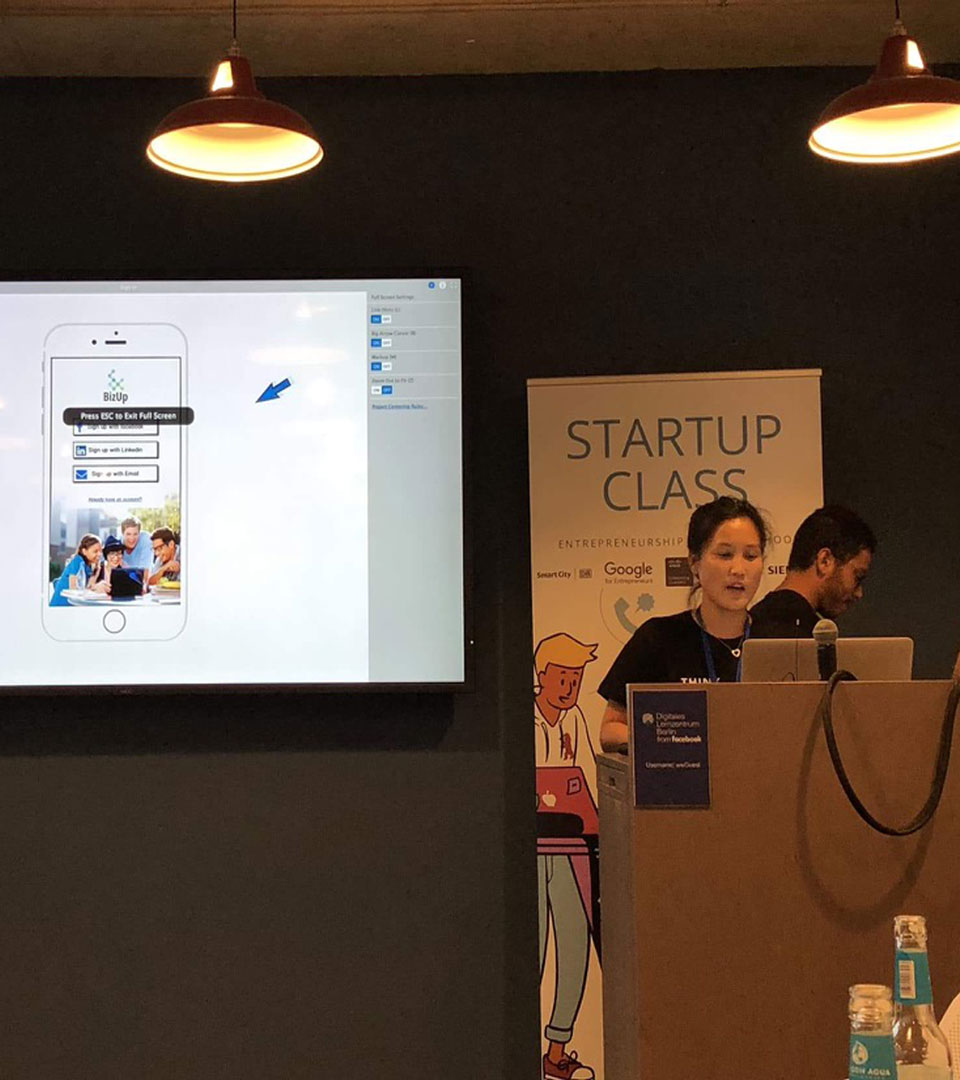
Design Thinking Process
'BizUp' is a platform for university students to interact and share their ideas. The idea was developed as part of the Startup Class Berlin 2018 on behalf of Google with two other team member.
1. SCOPE
The Task
How to encourage more students towards entrepreneurship?
Find out the problem
Brainstorm with the team members Collect assumptions and knowledge about the topic
- Why do only a few students found a startup after or during their studies?
- Challenges
- Restrictions
- Possibilities
Potential Customers
In order to define our potential interviewees and our potential future customers, we have divided the target groups into three categories
- Direct Users
- Indirect Users
- People whom customers could influence
Client
Category
- Design Thinking Process
- User Experience
- User Interface
- Kanban
- Interview
- Persona
- Prototyping
- Basamiq App
- Usability Test
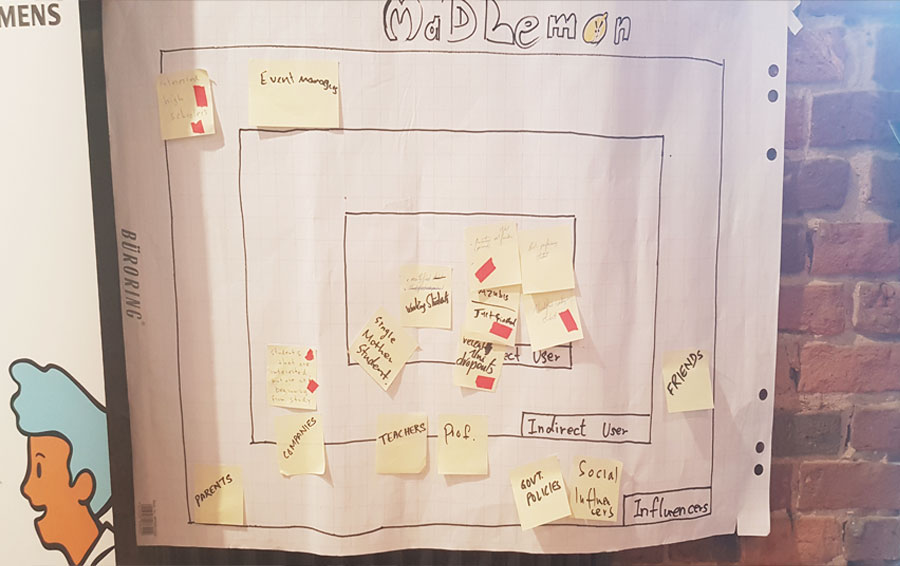
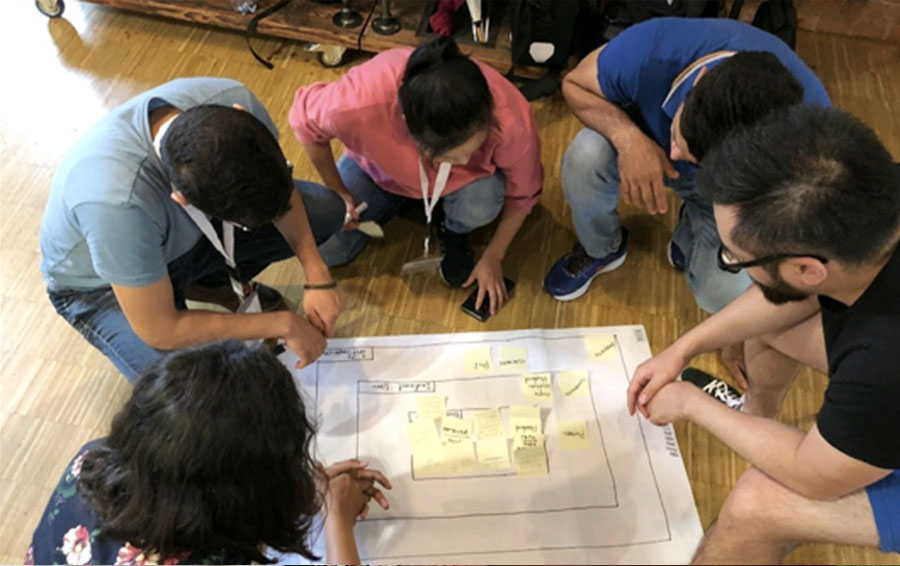
2. RESEARCH
Which services are already available?
There are countless programs and opportunities on the Internet to get support in starting a startup. There are also some ways to get a grant as a student. Apps, as well as startup Meetups and Facebook groups are also widely used to make contacts and to exchange information.
What Google already offers
- Google for Startups
- startup.google.com
- Google for Entrepreneurs and Factory Partnership
- Google Ventures invests in European startups
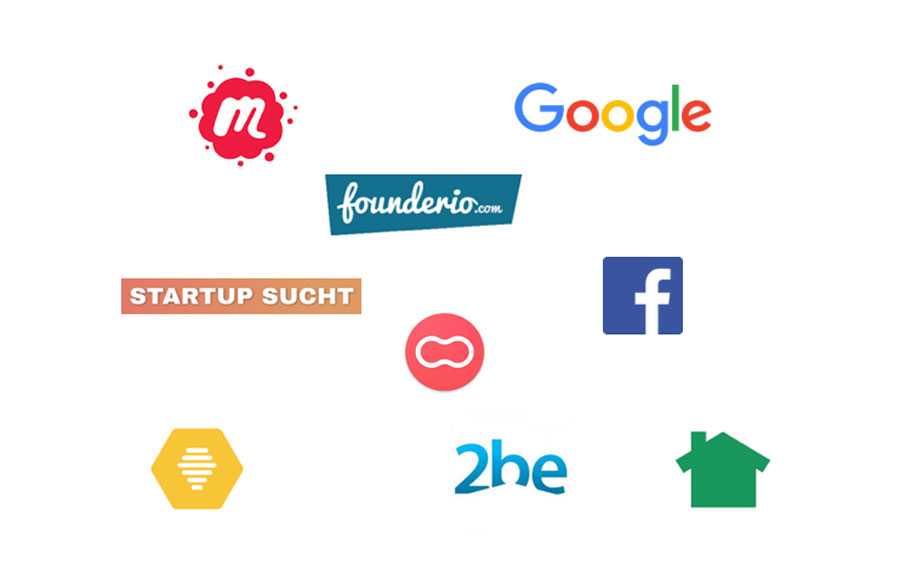
Online platforms that have a similar concept with BizUp
This research was performed again after the idea phase. We concluded in this phase that we could tackle the problem best with a mobile app. The app should offer a service to meet people and have a possibility to form an offline group.
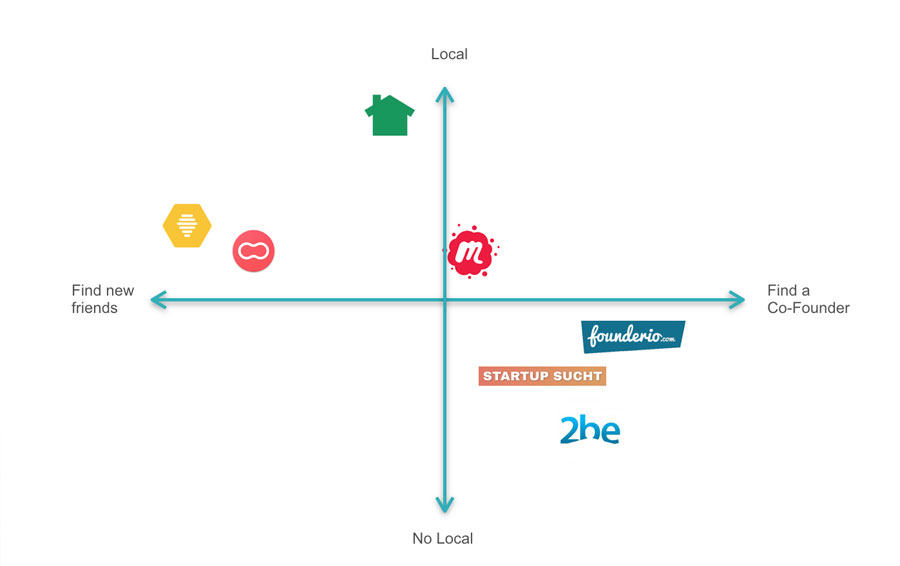
Interview
We went out with two people in a team and interviewed a total of 7 people. Expected issues were raised, but there were also unexpected answers like, "I have no idea what startup means."
Although there is a great deal of information about startups online as well as offline, most respondents said that there is too little information about startups. They are aware of the abundance of information on the Internet, yet they do not want or even have time to research there and find out something suitable for themselves. In addition, they feel not knowledgeable enough to find the right offer for them.
3. SYNTHESIZE
Interview results: Early Adopter (First Persona)
Vera, 23 years old, graphic design student in 3rd semester, single and living in a shared flat. She moved to Berlin because of her studies and has no friends or family in the city apart from her colleagues in the university and her roommate. She is very ambitious but does not want other people to notice. Therefore she sometimes feels lonely or not understood. She is interested in design and new technology. She goes to a Meetup at least once a month.

Expectations and needs
Vera has always been very creative and would like to learn how to use her creativity well. She would like to work on her own idea, but she is not yet sure how to implement it economically. In any case, she wants to be able to make decisions at work and be able to work independently.
She needs more contacts in real life. While there are many offers for design or new technologies, she is not sure which of the many online or offline programs she really needs.
Pain Point
Generally, she is lonely because she moved to Berlin after school and still has no friends to talk about her interest with. Of course, she has college colleagues and a roommate, but she feels they do not like to talk about startup ideas or technology. That's why she likes going to Meetups, but she feels too much like a beginner and does not dare talk to people. Slowly she no longer believes that such meetings will do her any good.
Customer perspective fill-in-the-blank text
First draft
We have met Vera, who has the problem of having no connections with entrepreneurial people. It would be life changing for Vera, if she feels confident and empowered to start her own company.
Final iteration
We have met Vera, who has the problem of having no network of entrepreneurial people and is shy to talk directly to new people about her interests and questions. It would be life changing if someone could introduce her to entrepreneurs in her proximity, who share the same interests and are trying to grow their network as well.
Summary of key findings
Problem definitions
People from our target group …
- … have a business idea, but no one to discuss it with or receive real feedback from
- … want to use their spare time more constructively
- … have limited access to people with different skill sets and interests
- … may feel discouraged by family, friends or society to translate your ideas to startups
We encountered
Young students who have their own ideas and are interested in startup.
We discovered
Many offers on the Internet are usually not clear to beginners. The undergraduate students do not have much time to search for and try out what is offered. In addition, there are not many opportunities to meet real people, with whom you can stay in constant contact and share their ideas or knowledge.
It is really about
helping students to create opportunities and to meet other like-minded people in their free time to make their environment startup-friendly.
4. IDEA
Which problem would we like to solve? (Brainstorming)
What is the challenge?
To help startup prospects among students meet more people with similar interests at the campus.
Why do I want to solve this?
To help startup prospects among students meet more people with similar interests at the campus.
Who are the users?
Students at the university, academic staff at the university, professors.
What, where, when, how?
A startup Tinder app for students that makes it easier to meet more like-minded people at the university campus.
The Solution
“Providing a platform to students and other people at universities to interact with each-other and share their ideas.”
Unique value proposition
- Quick real feedback
- Transition from Online to Offline
- Giving an option to students to utilize their free time for something more meaningful
- Meeting other students of different skill sets one-to-one and locally
- Gives an option to introverts who are hesitant to go to larger social gatherings
- Encouraging a culture of entrepreneurship across universities
5. Prototype
a. Storytelling on paper and on smartphones were sketched in several iterations in order to get feedback on the process and the scenario as fast as possible.
b. The visual page structure serves to coordinate the most important functions and the structure of the app with the team to get fast feedback.
c. After we decided about functions and content in the group, we built a mockup with interactive features to run a UX test afterwards.
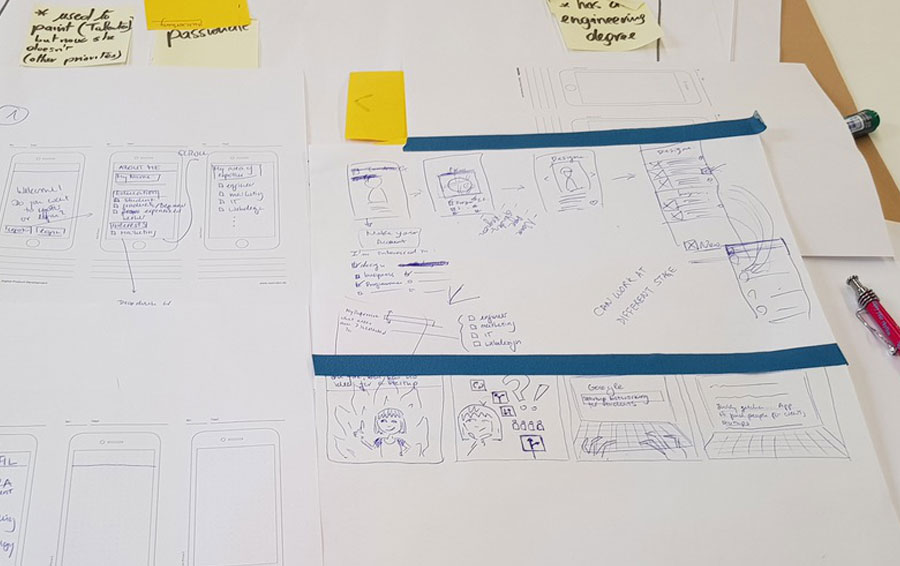
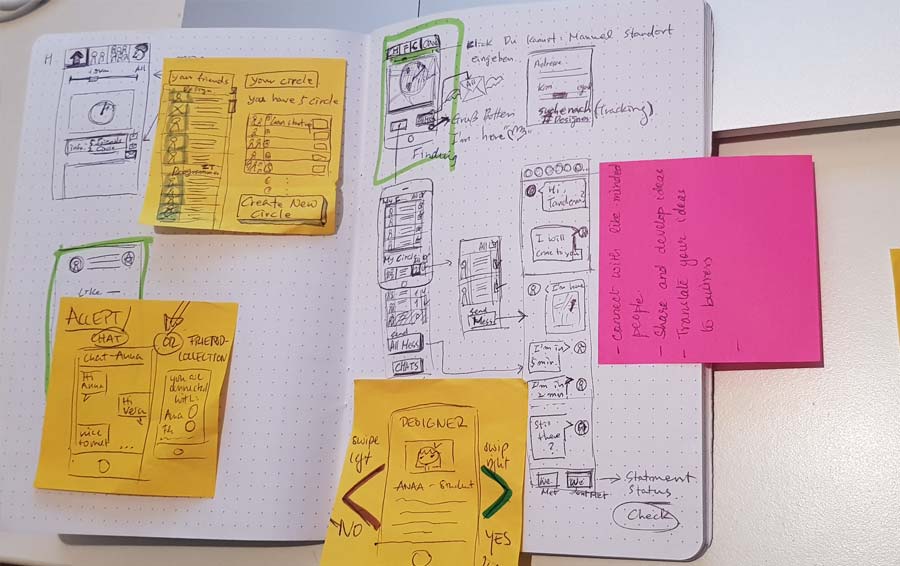
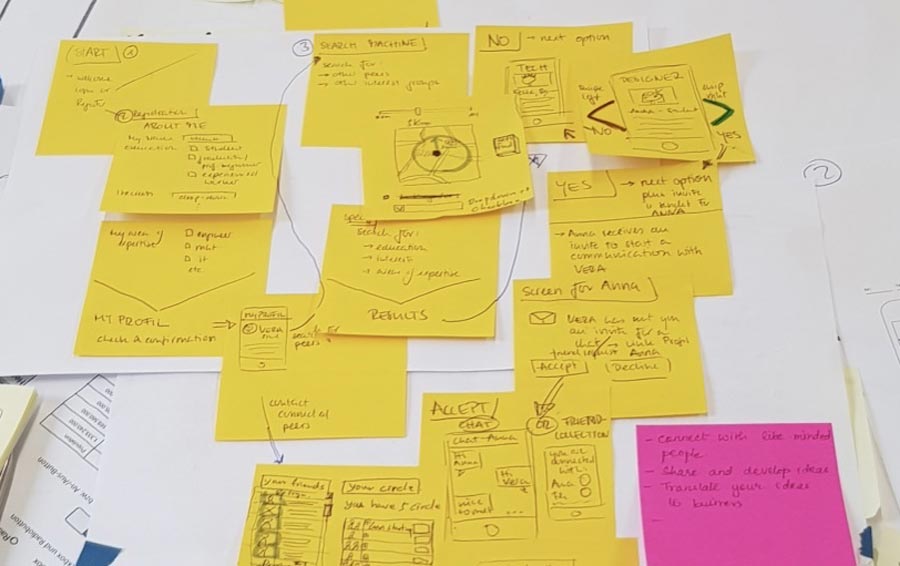
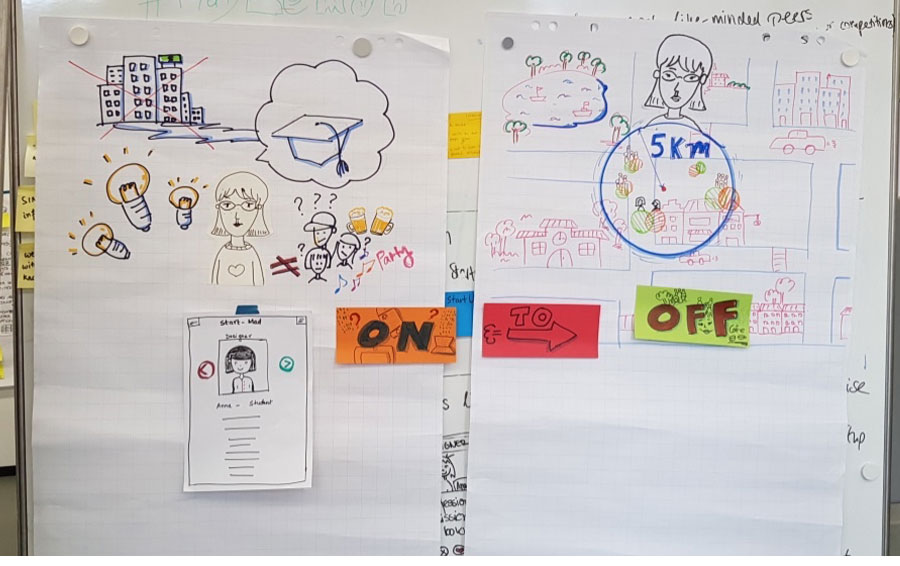
Storytelling
When registering you create a simple profile with name, age, study, professionalism, interest (for example, if you need knowledge or advice about programming for your startup idea).
If Vera has a 30-minute break between two lectures, she uses the app to contact a programmer nearby. Since she can see the distance on the app, she chooses the one who is online most close to her. Then she can get feedback on her idea at the meeting.
Interactive Mockup
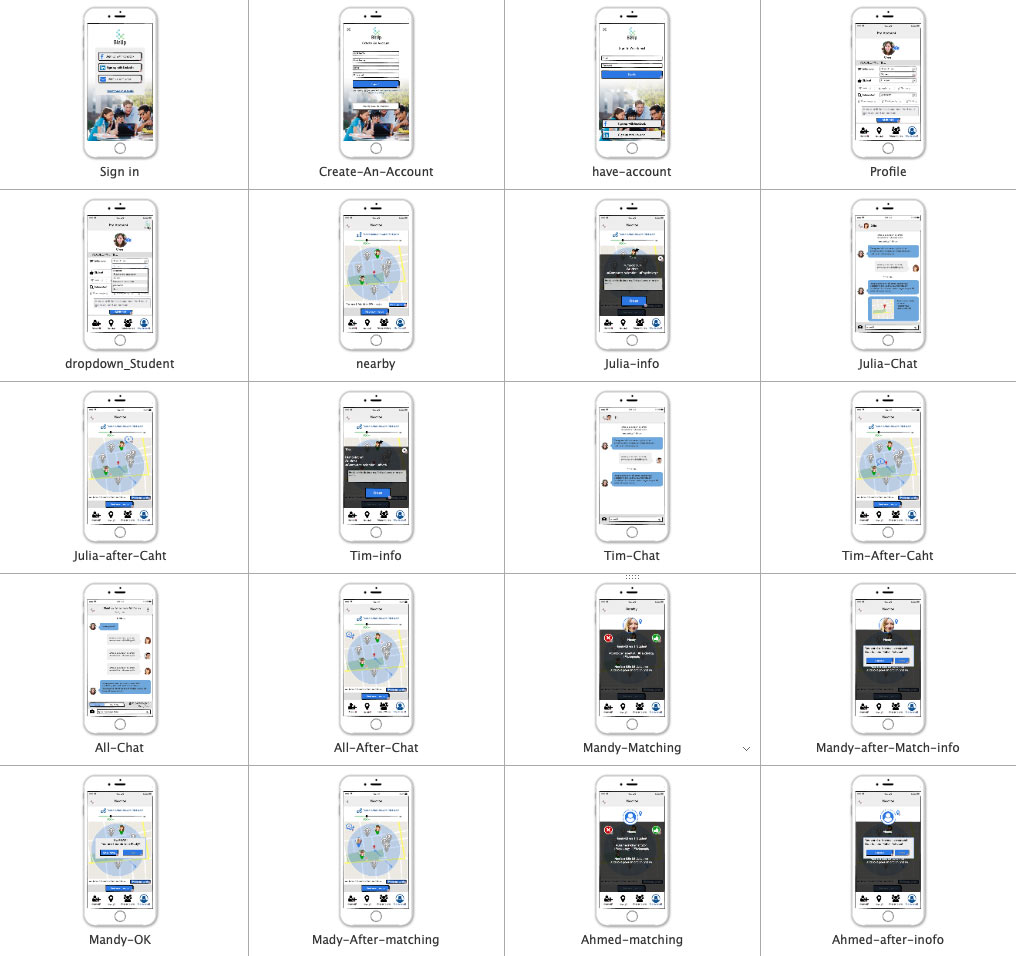
6. VALIDATE
User Experience Test
The tests were carried out at Siemens in the "Startup Incubator Berlin". Potential customers were invited in advance for the day.
What do we want to test?
Basically, we wanted to test whether the presentation of the app is intuitively for the users and understandable at all.
Essentially, we focused on the two matching and nearby features. Since we chose the prominent design of the well-known dating app Tinder for our matching feature, the biggest fear was that our test users could already form a prejudice about the matching feature. Therefore, it was important for us to explore the emotions of the test users.
UX-Test Execution
a. The storytelling video showed in advance how Vera uses the app to make more contacts with startup-interested people.
b. Test users saw a mockup on their screen, which they could click through and try out.
c. The test took place with a total of 12 participants. The subjects should use 'Think-Aloud methods'. As the name implies, these are about expressing your own thoughts aloud. The subjects were observed and their statements were noted. After the test, questions were asked about the observations.
d. Our team only observed most of the time, but if subjects felt insecure, we gave them some tasks for orientation.
Tasks
- Register your account
- Find new Bizup-Friends
- Have a chat with a new Bizup-Friend
- Use the app to meet with your new Bizup-Friend
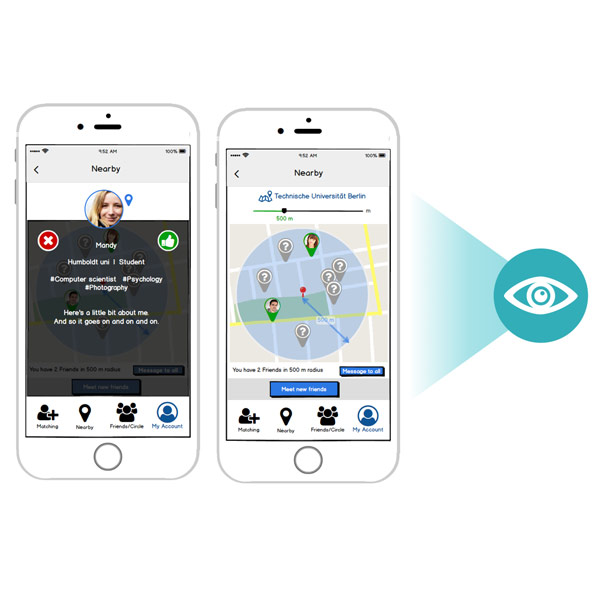
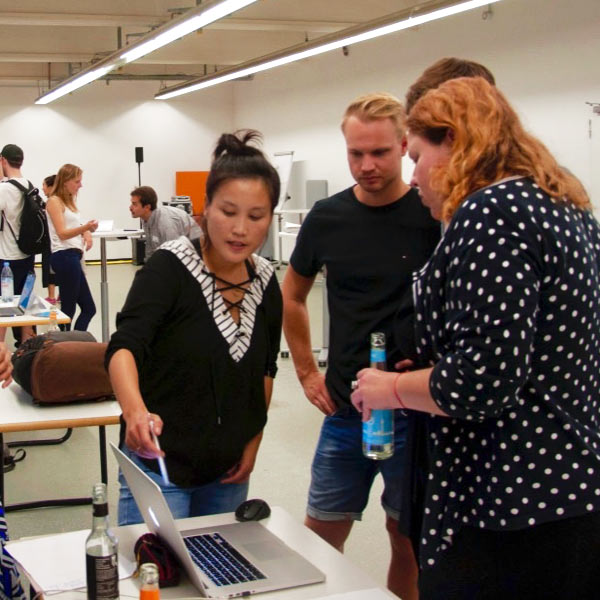
Insights
Among many little insights, there was a great deal of enlightenment that gave the crucial turn for the product. As our high-level concept name " 'Startup Tinder' already suggests, we thought the matching feature would be the most important feature for the app. As it turned out, not only were negative comments made about this feature, but it was also commented several times that this matching function was not necessary. Then, as a test user persistently questioned the feature and made specific proposals, we realized that the intentions of the app could be achieved without this feature completely.
Of course, a UX test is not there to fulfill the desires of test users, but if a request or idea of a user solves a problem, it should be considered.
Improvements
- Matching feature removed
- Search feature on every page
- Nearby page designed more clearly
